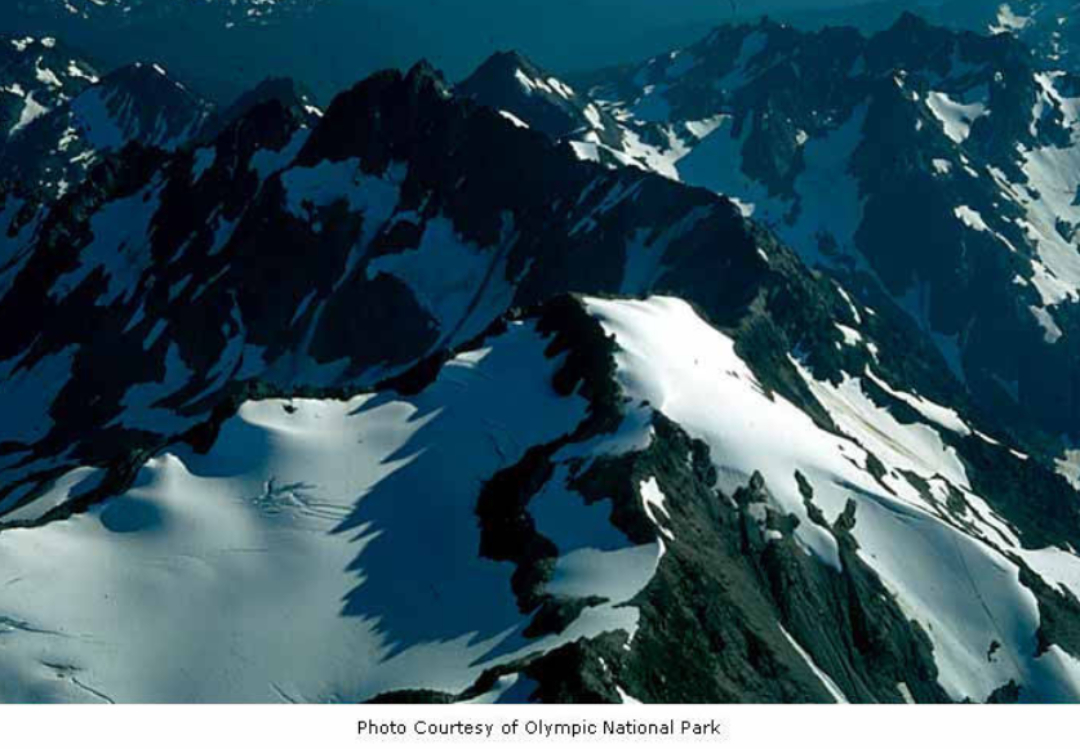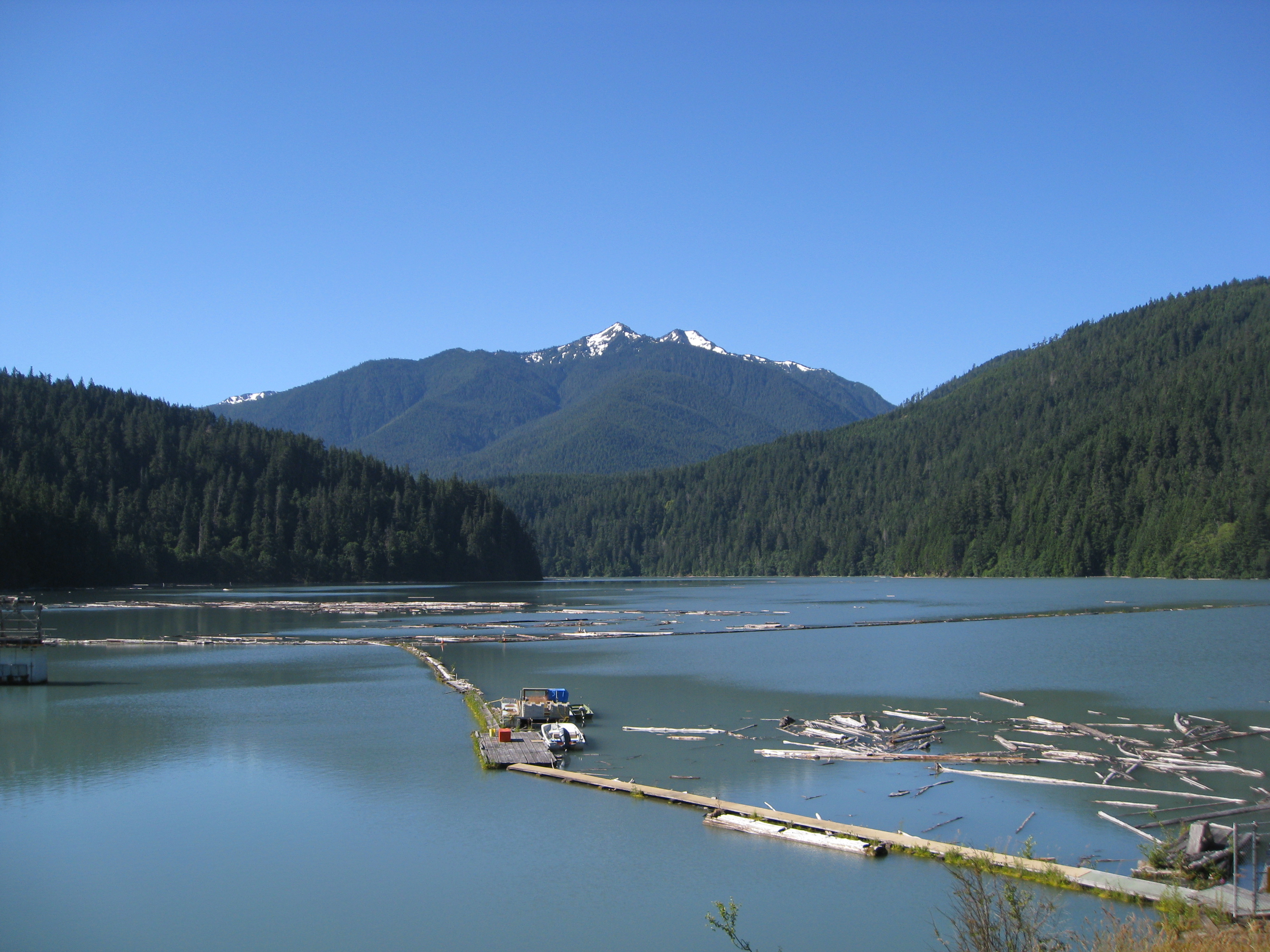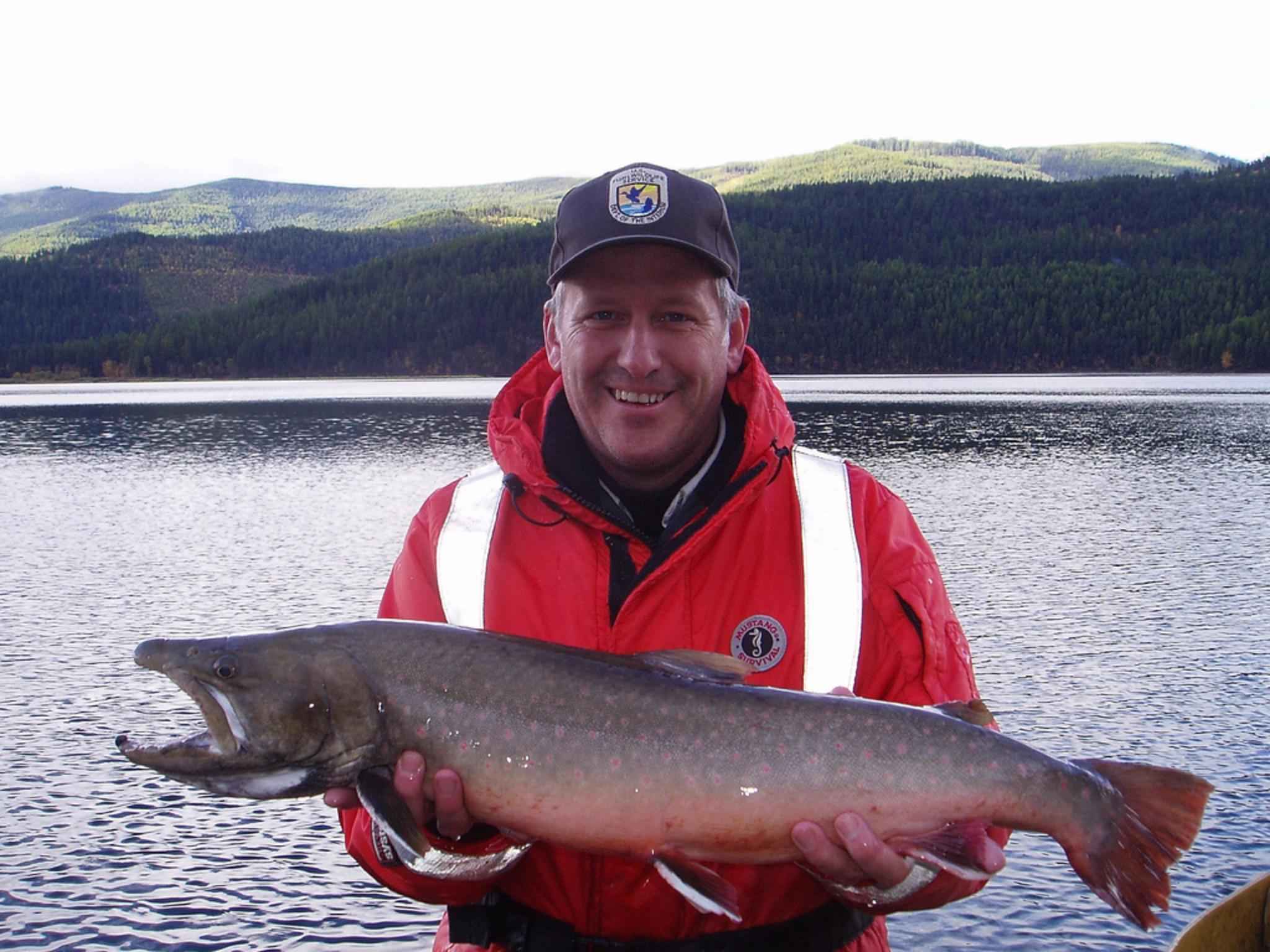|
Elwha River
The Elwha River is a river on the Olympic Peninsula in the U.S. state of Washington (state), Washington. From its source at Elwha snowfinger in the Olympic Mountains, it flows generally north to the Strait of Juan de Fuca. Most of the river's course is within the Olympic National Park. The Elwha is one several rivers in the Pacific Northwest that hosts all five species of native Pacific salmon (Chinook salmon, chinook, coho salmon, coho, chum salmon, chum, sockeye salmon, sockeye, and pink salmon), plus four Fish migration, anadromous trout species (Rainbow trout, steelhead, coastal cutthroat trout, bull trout, and Dolly Varden char). From 1911 to 2014, dams blocked fish passage on the lower Elwha River. Before the dams, 400,000 adult salmon returned yearly to spawn in of river habitat. Prior to dam removal, fewer than 4,000 salmon returned each year in only of habitat below the lower dam. The National Park Service removed the two dams as part of the $325 million Elwha Ecosyste ... [...More Info...] [...Related Items...] OR: [Wikipedia] [Google] [Baidu] |
Washington (state)
Washington (), officially the State of Washington, is a state in the Pacific Northwest region of the Western United States. Named for George Washington—the first U.S. president—the state was formed from the western part of the Washington Territory, which was ceded by the British Empire in 1846, by the Oregon Treaty in the settlement of the Oregon boundary dispute. The state is bordered on the west by the Pacific Ocean, Oregon to the south, Idaho to the east, and the Canadian province of British Columbia to the north. It was admitted to the Union as the 42nd state in 1889. Olympia is the state capital; the state's largest city is Seattle. Washington is often referred to as Washington state to distinguish it from the nation's capital, Washington, D.C. Washington is the 18th-largest state, with an area of , and the 13th-most populous state, with more than 7.7 million people. The majority of Washington's residents live in the Seattle metropolitan area, the center of trans ... [...More Info...] [...Related Items...] OR: [Wikipedia] [Google] [Baidu] |
Sockeye Salmon
The sockeye salmon (''Oncorhynchus nerka''), also called red salmon, kokanee salmon, blueback salmon, or simply sockeye, is an anadromous species of salmon found in the Northern Pacific Ocean and rivers discharging into it. This species is a Pacific salmon that is primarily red in hue during spawning. They can grow up to in length and weigh . Juveniles remain in freshwater until they are ready to migrate to the ocean, over distances of up to . Their diet consists primarily of zooplankton. Sockeye salmon are semelparous, dying after they spawn. Some populations, referred to as kokanee, do not migrate to the ocean and live their entire lives in fresh water. Classification and name origin The sockeye salmon is the third-most common Pacific salmon species, after pink and chum salmon. ''Oncorhynchus'' comes from the Greek ὄγκος (onkos) meaning "barb", and ῥύγχος (rhynchos) meaning "snout". ''Nerka'' is the Russian name for the anadromous form. The name "sockeye" ... [...More Info...] [...Related Items...] OR: [Wikipedia] [Google] [Baidu] |
Mount Christie (Washington)
Mount Christie is high peak in the Olympic Mountains of Washington in Olympic National Park. Mount Christie is located in the Queets-Quinault group. Precipitation on Mt. Christie drains into the Elwha River on the north side, and into the Quinault River on the south side. The mountain was named to honor James Halbold Christie, who was the leader of the Seattle Press Expedition which first explored the unknown interior of the range in 1889–1890. The massif has several peaks, and the large Christie Glacier resides in the north cirque below the main summit.Mount Christie, Peakware.com Climate Mount Chtistie is located in the marine west coast climate zone of western North America. Most weather fronts originate in the Pacific Ocean, and travel northeast toward the Olympic Mountains. As fronts approach, they are forced upward by the peaks of the Olympic Range, causing them to drop their moisture in the form of rain or snowfall (Orographic lift). As a result, the Olympics experien ... [...More Info...] [...Related Items...] OR: [Wikipedia] [Google] [Baidu] |
Mount Queets
Mount Queets is a mountain summit located deep within Olympic National Park in Jefferson County, Washington, Jefferson County of Washington (U.S. state), Washington state. With a good eye and clear weather, the top of the mountain can be seen from the visitor center at Hurricane Ridge. Its nearest higher peak is Mount Meany (6,695 ft), to the south. Due to heavy winter snowfalls, Mount Queets supports the Queets Glacier in a cirque on its north slope, despite its modest elevation. Precipitation Surface runoff, runoff from the mountain drains into the headwaters of both the Elwha River and Queets River. There are scrambling routes ranging from class Yosemite Decimal System, YDS 2 via the North Ridge, class 3 via the ridge from Mt. Meany, and class 4 via the Queets Glacier. History The present day Mt. Meany - Mt. Queets area was referred to as Mt. Mesachie on the 1896 Daniel Hunt Gilman, Gilman National Geographic Map. The word ''mesachie'' is from Chinook Jargon and me ... [...More Info...] [...Related Items...] OR: [Wikipedia] [Google] [Baidu] |
Elwha River 2022 By Madison Falls
{{disambig, geo ...
Elwha may refer to: Places * Elwha River, a river in Washington, US * Elwha, Washington, an unincorporated community in Clallam County, Washington * Elwha Dam, one of two dams on the Elwha River until being removed in 2012 * Elwha snowfinger, a perennial snowfield, separating the Elwha River and Queets River watersheds in the US Vessels * MV Elwha, a ferry boat operated by Washington State Ferries Native American Communities * Lower Elwha Klallam Tribe The Lower Elwha Klallam Tribe (or Nəxʷsƛ̓áy̓əm ("strong people") in Klallam ) is a Federally recognized tribes, federally recognized Native Americans in the United States, Native American nation in the Pacific Northwest of the United States. ... [...More Info...] [...Related Items...] OR: [Wikipedia] [Google] [Baidu] |
Henry Kellett
Vice Admiral Sir Henry Kellett, (2 November 1806 – 1 March 1875) was a British naval officer and explorer. Career Born at Clonacody in Tipperary County, Ireland, on 2 November 1806, Kellett joined the Royal Navy in 1822. He spent three years in the West Indies and then served on survey vessels under William Fitzwilliam Owen in Africa, as second-in-command of under Edward Belcher in the East Indies, and as captain of in the First Opium War with China during which he was promoted to commander in 1841 and post-captain in 1842. In 1845 Kellett was appointed captain of the survey ship as part of a hydrography survey mission, the primary objective of which was to survey the coast of the Americas from Guayaquil to Vancouver, including the Galápagos Islands. He was temporarily reassigned in 1848 to join the search for Sir John Franklin. During this voyage he sailed through the Bering Strait across the Chukchi Sea and discovered Herald Island. Kellett landed on Herald Island a ... [...More Info...] [...Related Items...] OR: [Wikipedia] [Google] [Baidu] |
Elwha Ecosystem Restoration
The Elwha Ecosystem Restoration Project is a 21st-century project of the U.S. National Park Service to remove two dams on the Elwha River on the Olympic Peninsula in Washington state, and restore the river to a natural state. It is the largest dam removal project in history and the second largest ecosystem restoration project in the history of the National Park Service, after the Restoration of the Everglades. The controversial project, costing about $351.4 million, has been contested and periodically blocked for decades. It has been supported by a major collaboration among the Lower Elwha Klallam Tribe, and federal and state agencies. The removal of the first of the two dams, the Elwha Dam, began in September 2011 and was completed ahead of schedule in March 2012. Removal of the second dam, the Glines Canyon Dam, was completed on August 26, 2014. History of the Elwha River Historically, the Elwha River was one of the few rivers in the contiguous United States that supported ... [...More Info...] [...Related Items...] OR: [Wikipedia] [Google] [Baidu] |
National Park Service
The National Park Service (NPS) is an agency of the United States federal government within the U.S. Department of the Interior that manages all national parks, most national monuments, and other natural, historical, and recreational properties with various title designations. The U.S. Congress created the agency on August 25, 1916, through the National Park Service Organic Act. It is headquartered in Washington, D.C., within the main headquarters of the Department of the Interior. The NPS employs approximately 20,000 people in 423 individual units covering over 85 million acres in all 50 states, the District of Columbia, and US territories. As of 2019, they had more than 279,000 volunteers. The agency is charged with a dual role of preserving the ecological and historical integrity of the places entrusted to its management while also making them available and accessible for public use and enjoyment. History Yellowstone National Park was created as the first national par ... [...More Info...] [...Related Items...] OR: [Wikipedia] [Google] [Baidu] |
Dolly Varden Char
The Dolly Varden trout (''Salvelinus malma'') is a species of salmonid fish native to cold-water tributaries of the Pacific Ocean in Asia and North America. It belongs to the genus ''Salvelinus'', or true chars, which includes 51 recognized species, the most prominent being the brook, lake and bull trout, as well as Arctic char. Although many populations are semi-anadromous, fluvial and lacustrine populations occur throughout its range. It is considered by taxonomists as part of the ''Salvelinus alpinus'' or Arctic char complex, as many populations of bull trout, Dolly Varden trout and Arctic char overlap. Taxonomy The scientific name of the Dolly Varden is ''Salvelinus malma''. The species was originally named by German naturalist and taxonomist Johann Julius Walbaum in 1792 based on type specimens from the Kamchatka Peninsula in Siberia. The name ''malma'' was based on Russian , the local colloquial name for the fish. The Dolly Varden trout is considered part of the ''S. a ... [...More Info...] [...Related Items...] OR: [Wikipedia] [Google] [Baidu] |
Bull Trout
The bull trout (''Salvelinus confluentus'') is a char of the family Salmonidae native to northwestern North America. Historically, ''S. confluentus'' has been known as the " Dolly Varden" (''S. malma''), but was reclassified as a separate species in 1980. Bull trout are listed as a threatened species under the U.S. Endangered Species Act (1998) and as vulnerable on the IUCN Red List of Threatened Species. Description Like other species of char, the fins of a bull trout have white leading edges. Its head and mouth are unusually large for salmonids, giving it its name. Bull trout have been recorded measuring up to in length and weighing . Bull trout may be either migratory, moving throughout large river systems, lakes, and the ocean, or they may be resident, remaining in the same stream their entire lives. Migratory bull trout are typically much larger than resident bull trout, which rarely exceed . Bull trout can be differentiated from brook trout (''S. fontinalis'') by the absen ... [...More Info...] [...Related Items...] OR: [Wikipedia] [Google] [Baidu] |
Coastal Cutthroat Trout
The coastal cutthroat trout (''Oncorhynchus clarkii clarkii''), also known as the sea-run cutthroat trout, blue-back trout or harvest trout, is one of the several subspecies of cutthroat trout found in Western North America. The coastal cutthroat trout occurs in four distinct forms. A semi-anadromous or sea-run form is the most well known. Freshwater forms occur in both large and small rivers and streams and lake environments. The native range of the coastal cutthroat trout extends south from the southern coastline of the Kenai Peninsula in Alaska to the Eel River in Northern California. Coastal cutthroat trout are resident in tributary streams and rivers of the Pacific basin and are rarely found more than from the ocean. Adults migrate from the ocean to spawn in fresh water. Juveniles migrate to the sea where they feed and become sexually mature before returning to fresh water to overwinter and spawn. Unlike steelhead and Pacific salmon, coastal cutthroat do not make lengthy m ... [...More Info...] [...Related Items...] OR: [Wikipedia] [Google] [Baidu] |
Rainbow Trout
The rainbow trout (''Oncorhynchus mykiss'') is a species of trout native to cold-water tributaries of the Pacific Ocean in Asia and North America. The steelhead (sometimes called "steelhead trout") is an anadromous (sea-run) form of the coastal rainbow trout or Columbia River redband trout that usually returns to freshwater to spawn after living two to three years in the ocean. Freshwater forms that have been introduced into the Great Lakes and migrate into tributaries to spawn are also called steelhead. Adult freshwater stream rainbow trout average between , while lake-dwelling and anadromous forms may reach . Coloration varies widely based on subspecies, forms, and habitat. Adult fish are distinguished by a broad reddish stripe along the lateral line, from gills to the tail, which is most vivid in breeding males. Wild-caught and hatchery-reared forms of the species have been transplanted and introduced for food or sport in at least 45 countries and every continent except ... [...More Info...] [...Related Items...] OR: [Wikipedia] [Google] [Baidu] |






_(15257826670).jpg)


